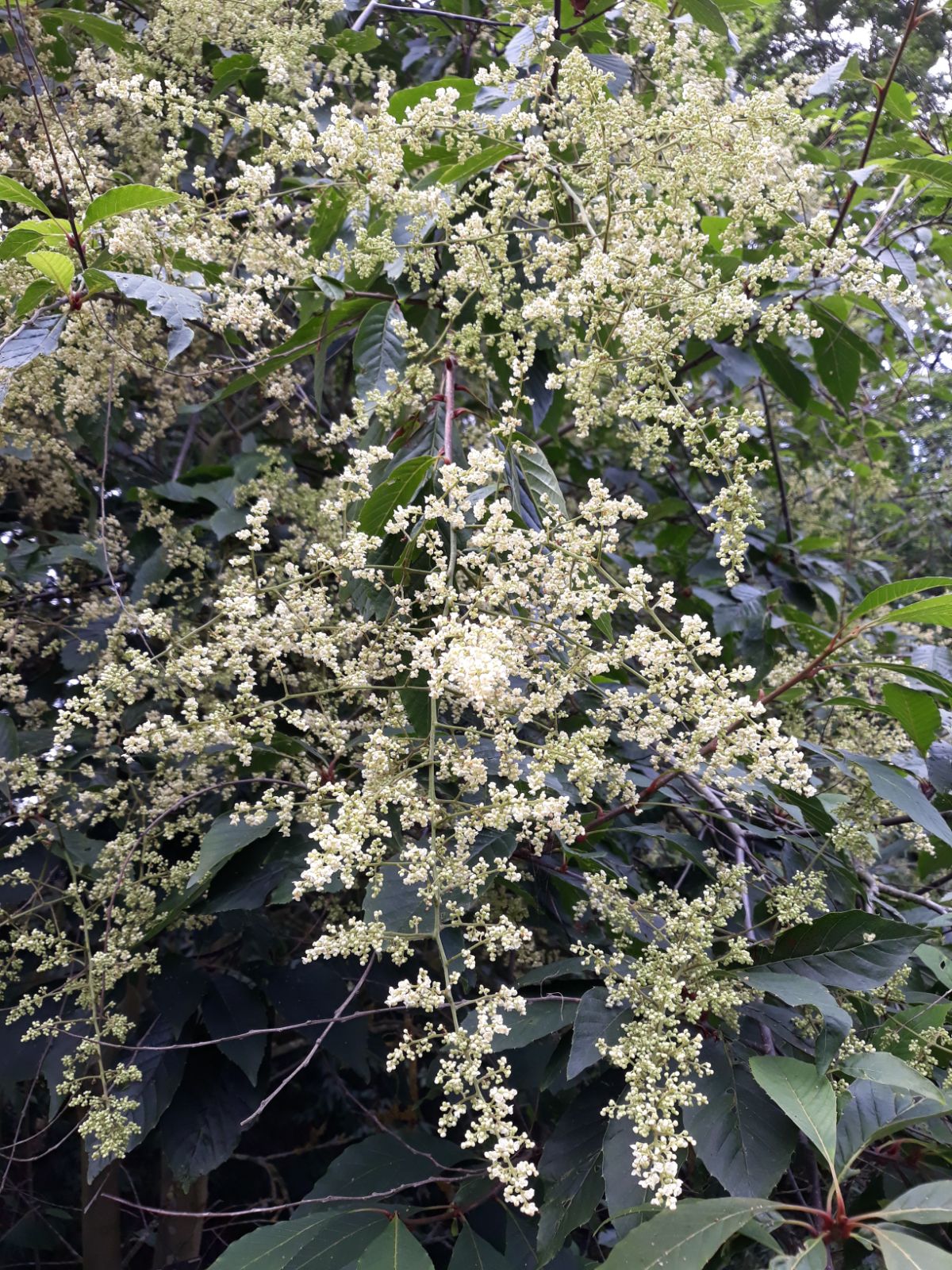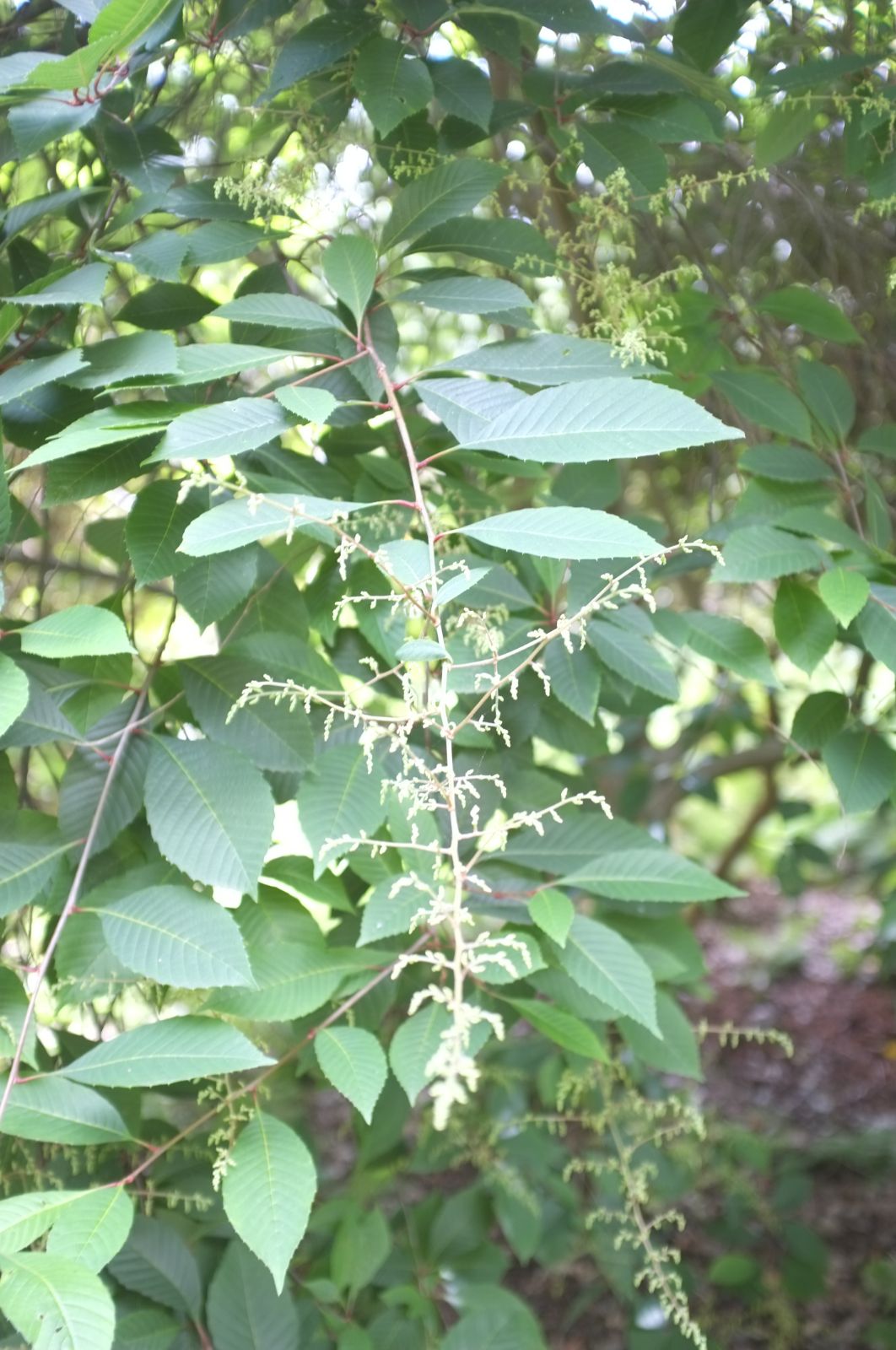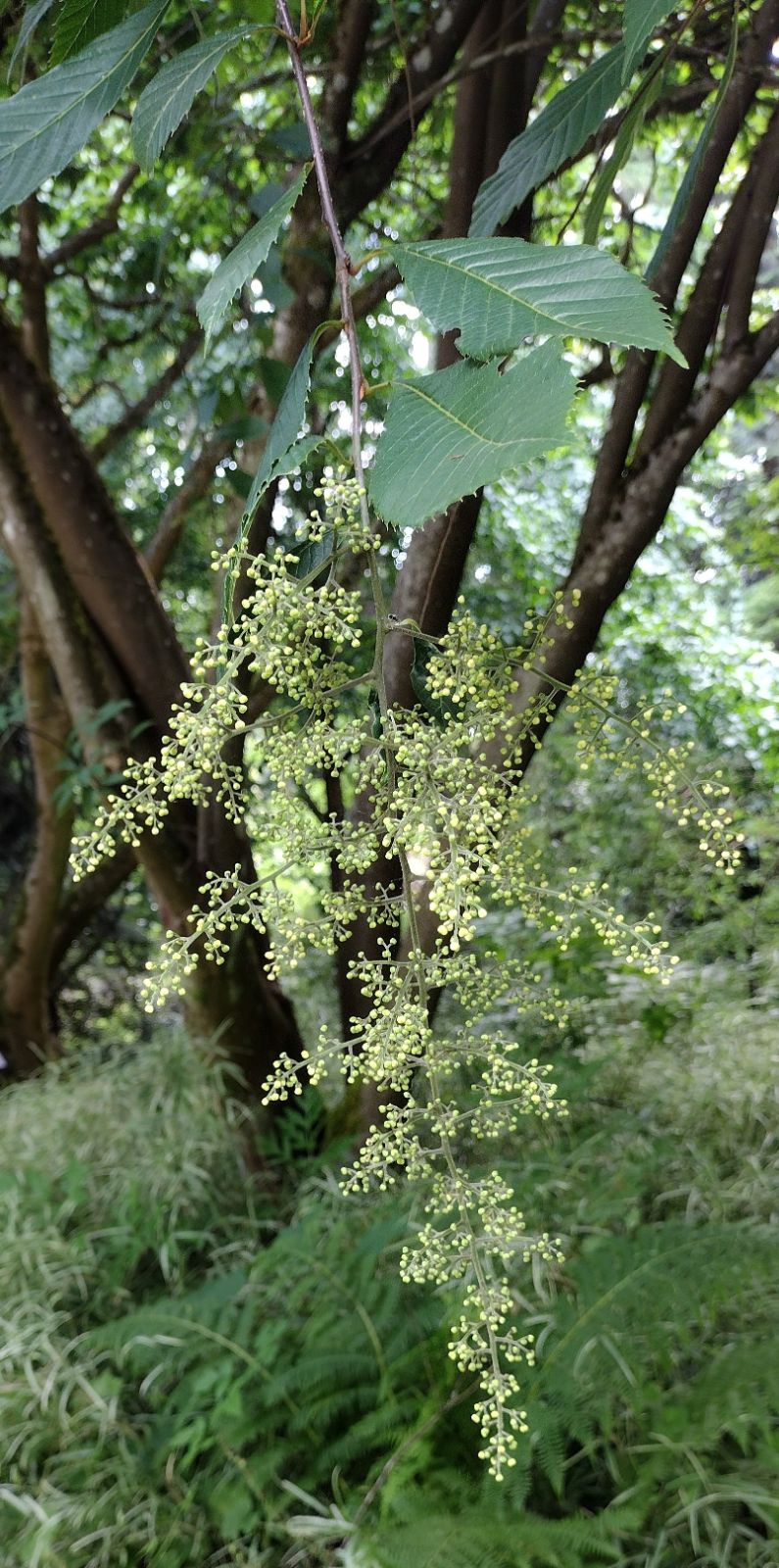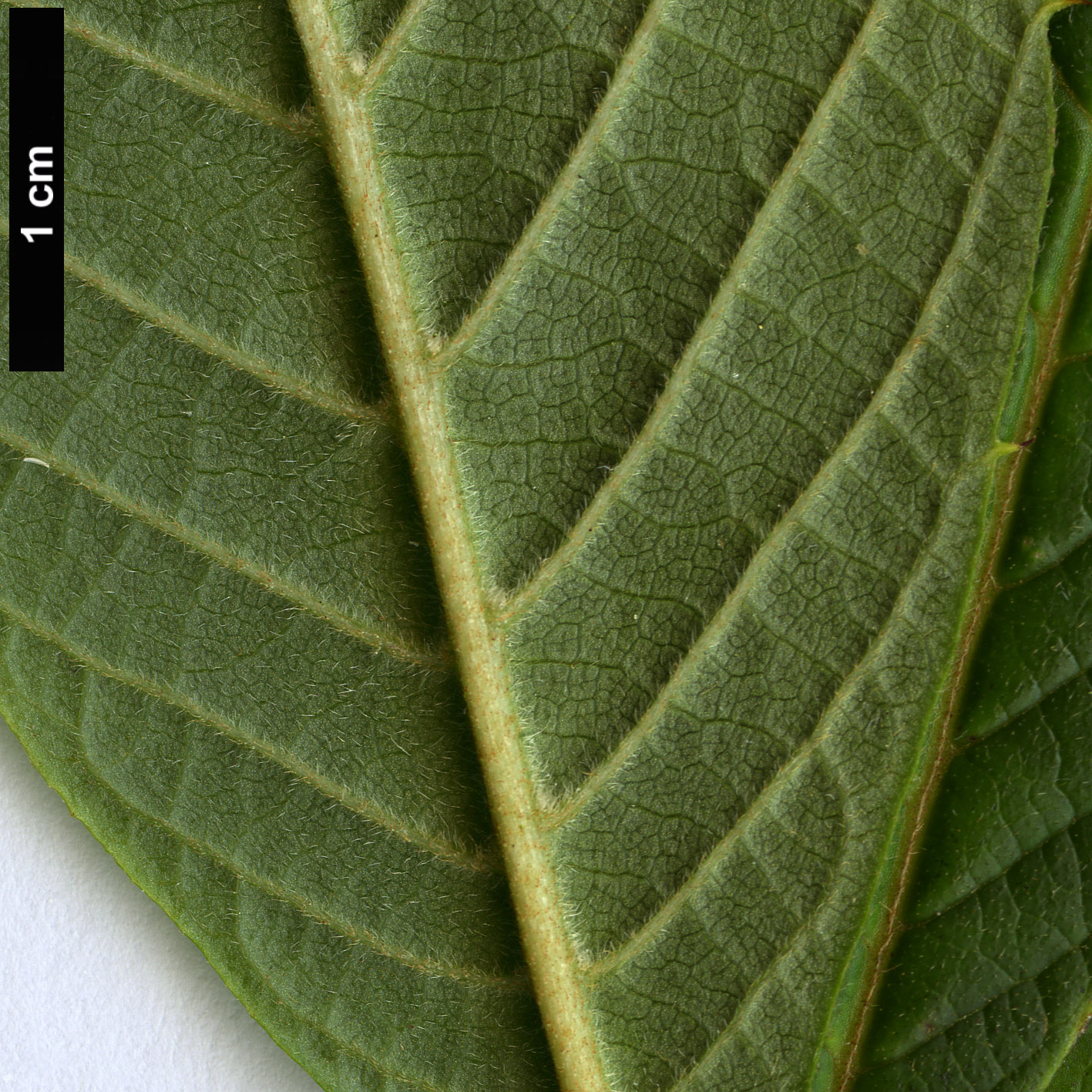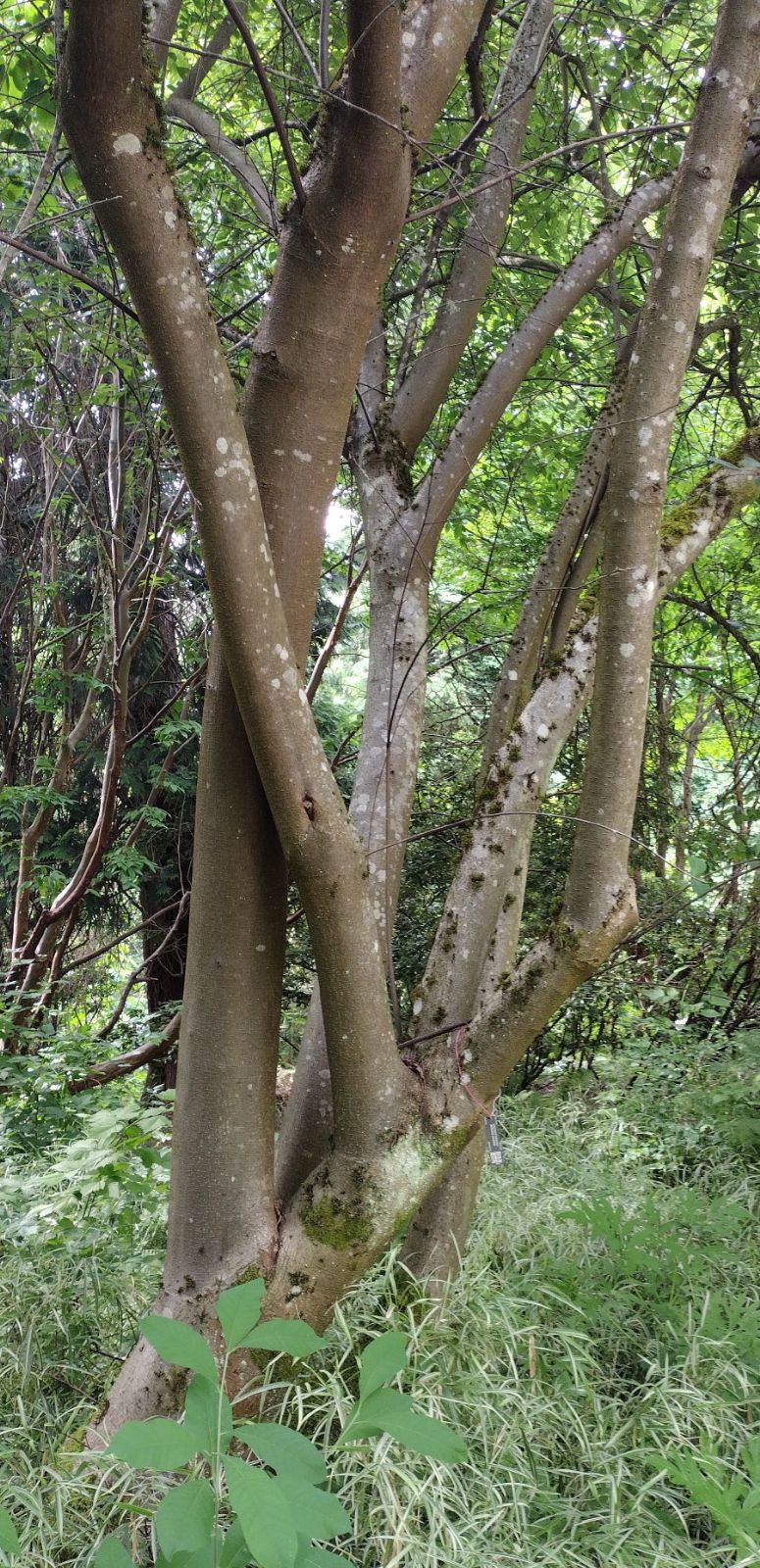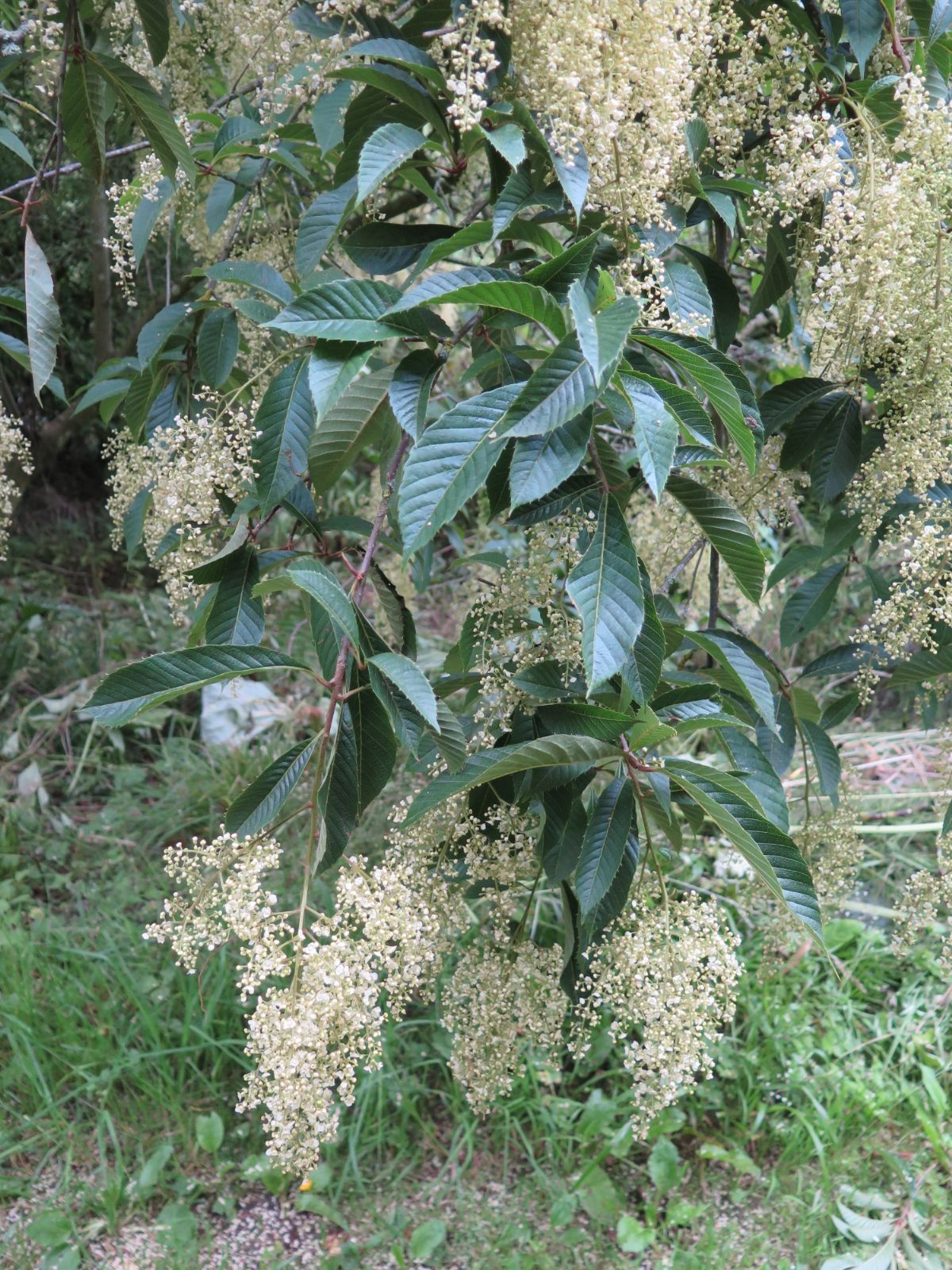Meliosma cuneifolia
Sponsor
Kindly sponsored by
Lady Diana Rowland
Credits
Owen Johnson (2022)
Recommended citation
Johnson, O. (2022), 'Meliosma cuneifolia' from the website Trees and Shrubs Online (treesandshrubsonline.
Genus
Common Names
- Wedge-leaved Bubble Flower
Synonyms
- Meliosma dilleniifolia subsp. cuneifolia (Franch.) Beusekom
A deciduous tree or large shrub, to 9 m, with erect branches. Bark smooth, dark grey-brown. Twigs blackish, pubescent. Leaves simple, narrowly obovate to cuneate and broadest near the tip, 8–12 × 2–4 cm, with brown pubescence on both sides, upper surface roughened; veins in 16–20(–30) pairs, conspicuously parallel and running almost straight to the margin, mostly serving a large aristate tooth, the teeth extending more than ¾ of the way to the leaf base, which is often decurrent into the very short petiole; tip shortly pointed. Flower-head terminal, erect, 15–20(–30) cm long and wide, pubescent, branched 3 or rarely 4 times. Flowering in early summer, flowers scented. Sepals 5. Petals greenish/yellowish then white, to 1 mm wide. Drupe compressed to globose, 6–7 mm wide. (Guo & Brach 2007; Bean 1981).
Distribution China Anhui, E Gansu, Guizhou, Henan, Hubei, Hunan, S Shaanxi, Shanxi, Sichuan, S Xizang, C and N Yunnan
Habitat Forests, 500–3300 m asl.
USDA Hardiness Zone 6
RHS Hardiness Rating H6
Conservation status Not evaluated (NE)
Like the other Meliosma species with simple and deciduous leaves, M. cuneifolia has handsome foliage: the many, closely parallel veins are likely to recall Alniaria (Sorbus) alnifolia, while the uniform and elegant wedge-shape of the lower two-thirds of the leaf is distinctive. The species was introduced to Veitch’s nursery in Surrey by Ernest Wilson in 1901 (Bean 1981) and seems well adapted to the climate of north-west Europe, producing its masses of white, hawthorn-scented flowers on a regular basis, though as a woodland plant it is hard to establish in full sun (Burncoose Nurseries 2022). Often multistemmed, it can grow as a small tree and its timber is valued in China (Guo & Brach 2007). The largest known in cultivation are three trees at Birr Castle in central Ireland up to 11 m tall (Tree Register 2022), which were planted around 1916, probably from an introduction from Yunnan by George Forrest (Bean 1981). At the Royal Botanic Garden Edinburgh, a bush grown from seed collected by Tse-tsun Yu in Yunnan in 1937 (Yu 10935) is 5 m tall, while a 6 m plant of tree-form survives in the shelter of the Woodland Garden at Crathes Castle, 140 km further north (Tree Register 2022). The tallest in Wales is an 8 m multistemmed specimen planted in a slightly alkaline soil during the early stages of the establishment of the public arboretum at Bute Park in Cardiff, after 1947 (Tree Register 2022). Unlike several of its allies, M. cuneifolia has been reintroduced on various occasions in recent decades, with plants from SICH 1472 already 8 m tall at Howick in Northumberland and with SICH 1718 and 1736 both represented at Kew (Tree Register 2022). In 2020, it was commercially available from four suppliers in the UK (Royal Horticultural Society 2020), and was also advertised by Pépinière AOBA and Promesse de Fleurs in France. It has been successfully grown since 2013 in de Nieuwe Ooster crematorium in Amsterdam (de Nieuwe Ooster crematorium 2022).
Meliosma cuneifolia is one of several representatives of the genus in the David C. Lam Asian Garden of the University of British Columbia in Vancouver, Canada (University of British Columbia 2014), where the frankly bizarre name ‘wedge-leaved bubble flower’ has been coined for it. In the United States, a Chinese collection has been grown since 2006 at the Dawes Arboretum at Newark, Ohio (hardiness zone 6a) (Dawes Arboretum 2022) and there are unconfirmed accessions at the New York Botanical Garden (Royal Botanic Garden Edinburgh 2022) and at the Washington Park Arboretum in Seattle. However, the mature tree at Brookside Gardens in Pennsylvania photographed by Randy Stewart as M. cuneifolia in his ever-interesting blog (Stewart 2022) is M. parviflora, and Barry Yinger’s comments on the cultivation of M. cuneifolia, cited by Stewart on the same web page, would seem likely to relate to that taxon.
Flora of China (Guo & Brach 2007) distinguishes var. glabriuscula Cufodontis, with almost glabrous foliage and leaves decurrent on the petiole, but observations are lacking to confirm whether any plants in cultivation in the west belong to this form. Meliosma cuneifolia was treated by van Beusekom (1971) as a subspecies of the Himalayan M. dilleniifolia.

